Gabions are rectangular wire mesh baskets filled with rock at the project site to form flexible, permeable, monolithic structures such as retaining walls for commercial, industrial and road projects. Gabions are used as modular construction blocks to prevent soil erosion. They offer an alternative solution to concrete structures. Gabions, by virtue of their matchless strength, excellent engineering adaptability and proven reliability, have become the chosen building material for the tremendous variety of construction works.
Gabions are rectangular wire mesh baskets filled with rock at the project site to form flexible, permeable, monolithic structures such as retaining walls for commercial, industrial and road projects. Gabions are used as modular construction blocks to prevent soil erosion. They offer an alternative solution to concrete structures. Gabions, by virtue of their matchless strength, excellent engineering adaptability and proven reliability, have become the chosen building material for the tremendous variety of construction works.
One of the key factors in the long term performance of gabions is the quality of the wire used for the mesh, selvedge wire and lacing wire. Dunes gabions are manufactured from high quality steel wire woven into a double twist hexagonal mesh to give both mechanical strength and prevent unravelling. The quality of the wire is strictly controlled and conforms to BS 1052:1980 for tensile strength.
APPLICATIONS OF GABIONS:
Gabions are typically a permanent or semi-permanent slope and/or soil stabilization application.
Typical installations include:
Retaining walls
Bridge abutments and wing walls
Culvert headwalls and outlet aprons
Shore and beach protection
Water recharge dams / Check dams
Rock slide protection works
River training works
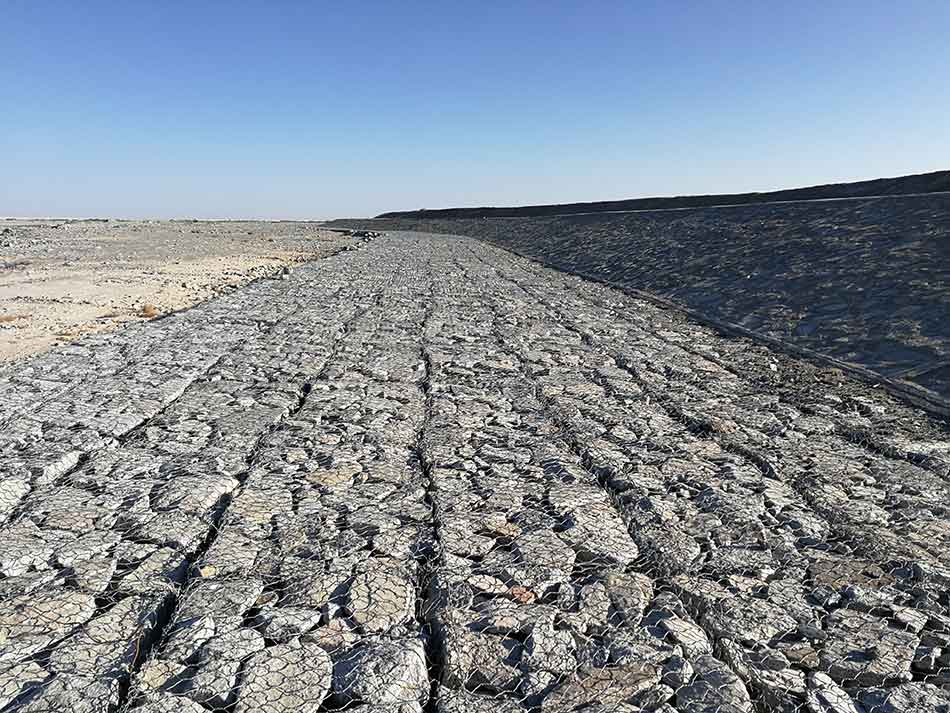
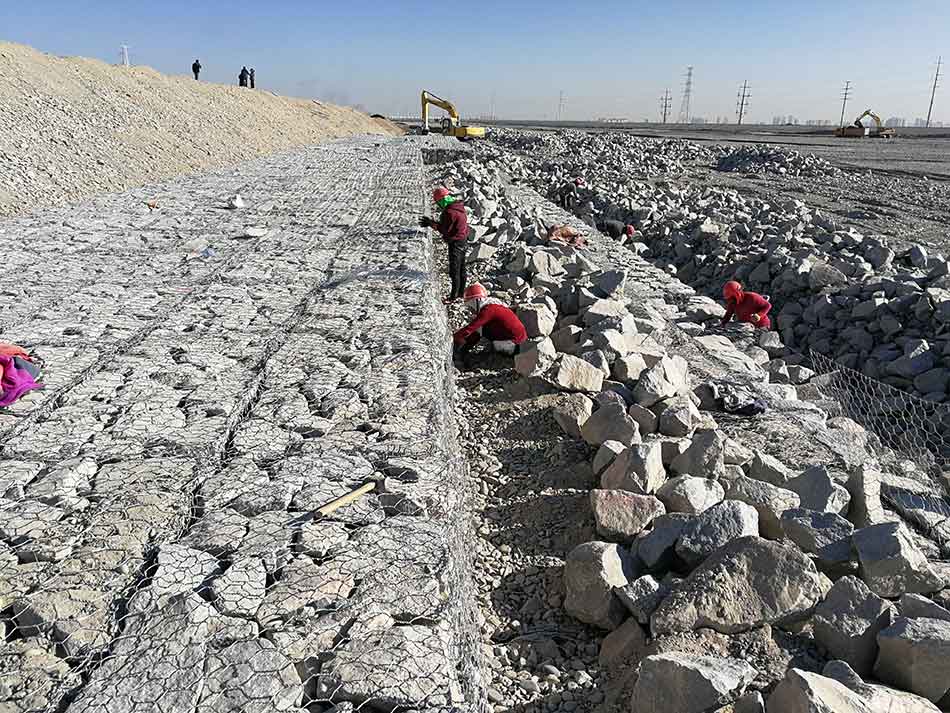
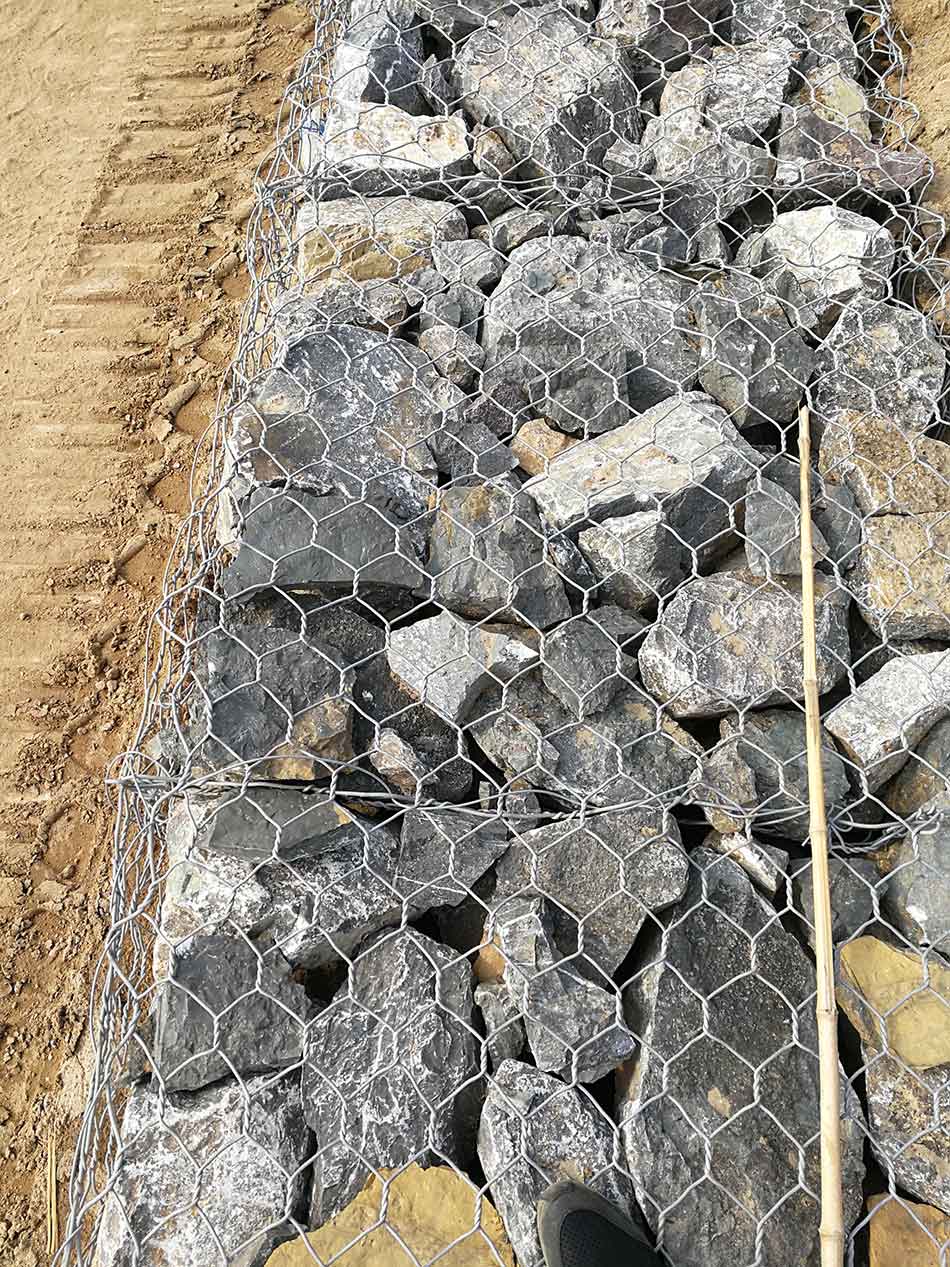
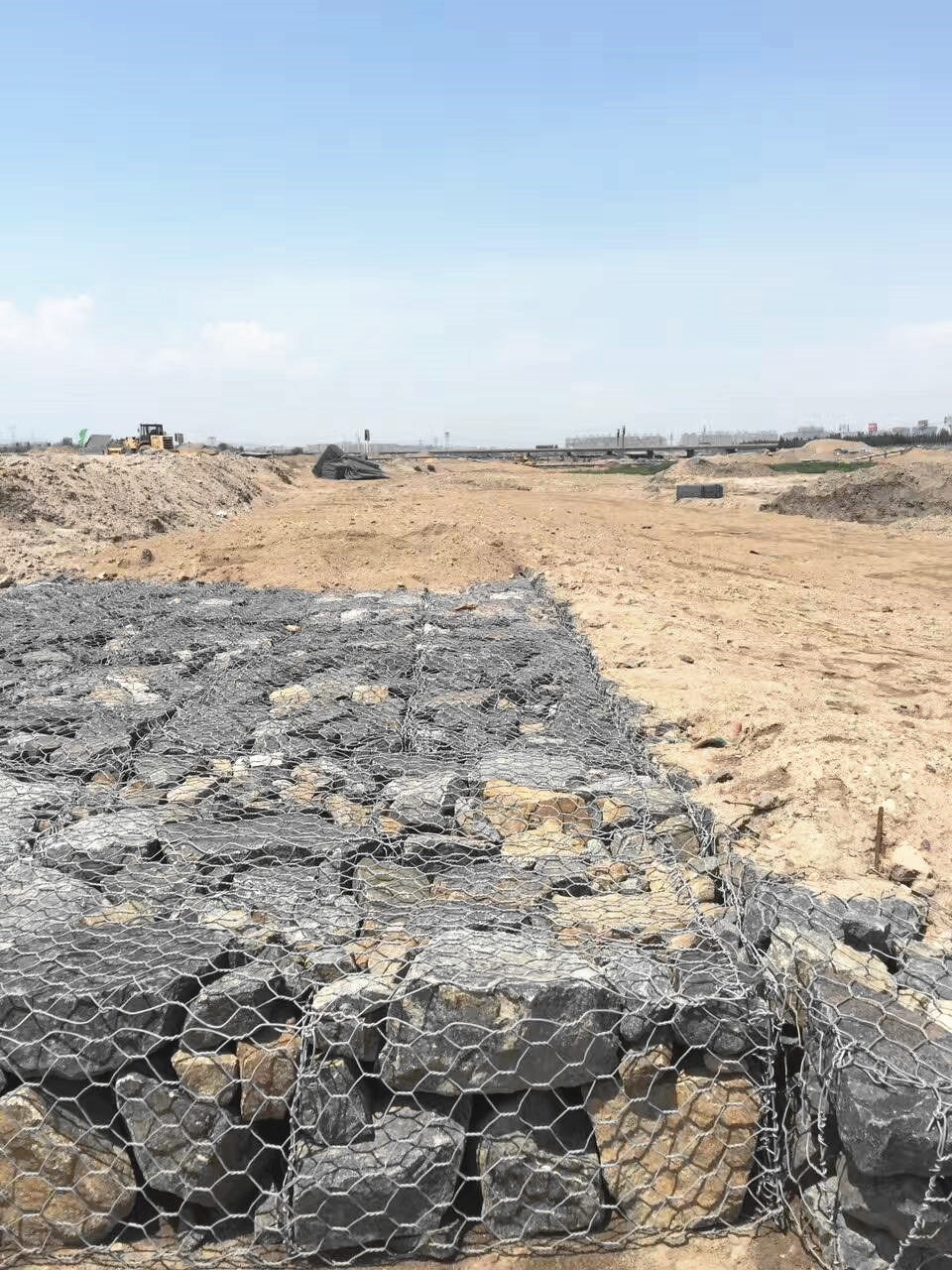
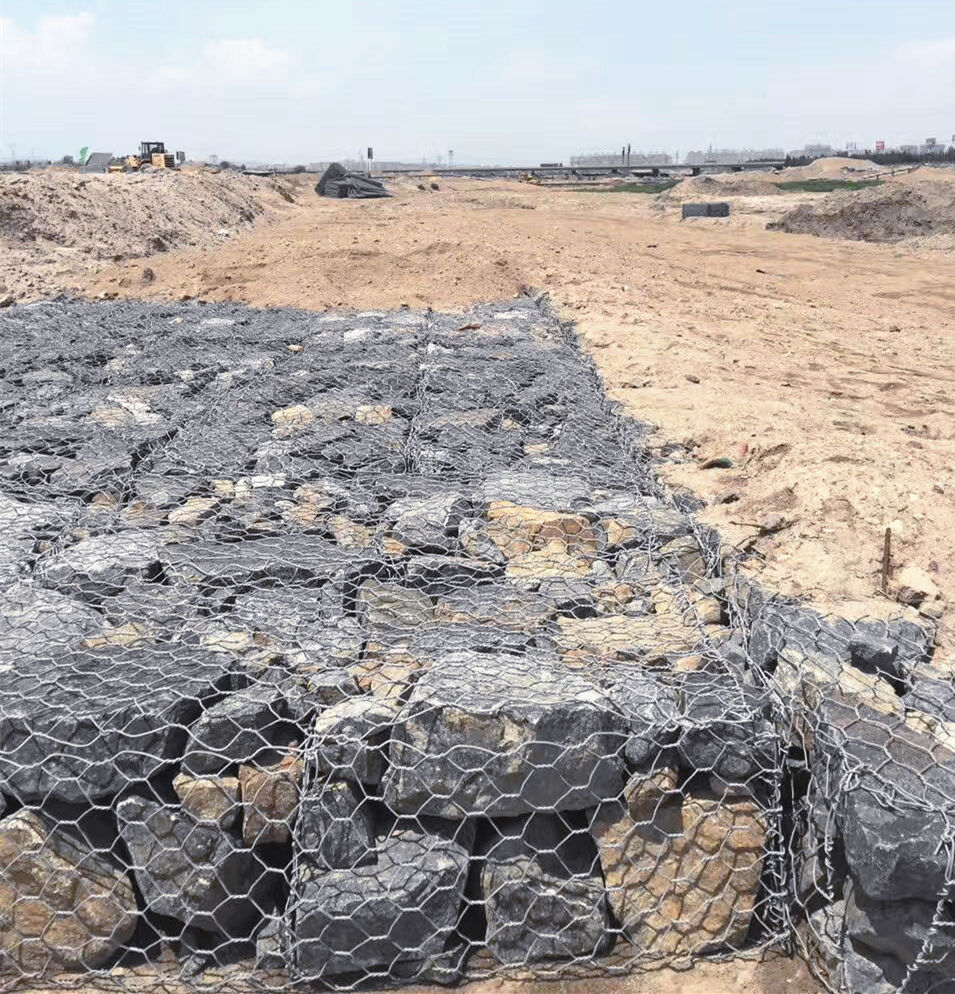
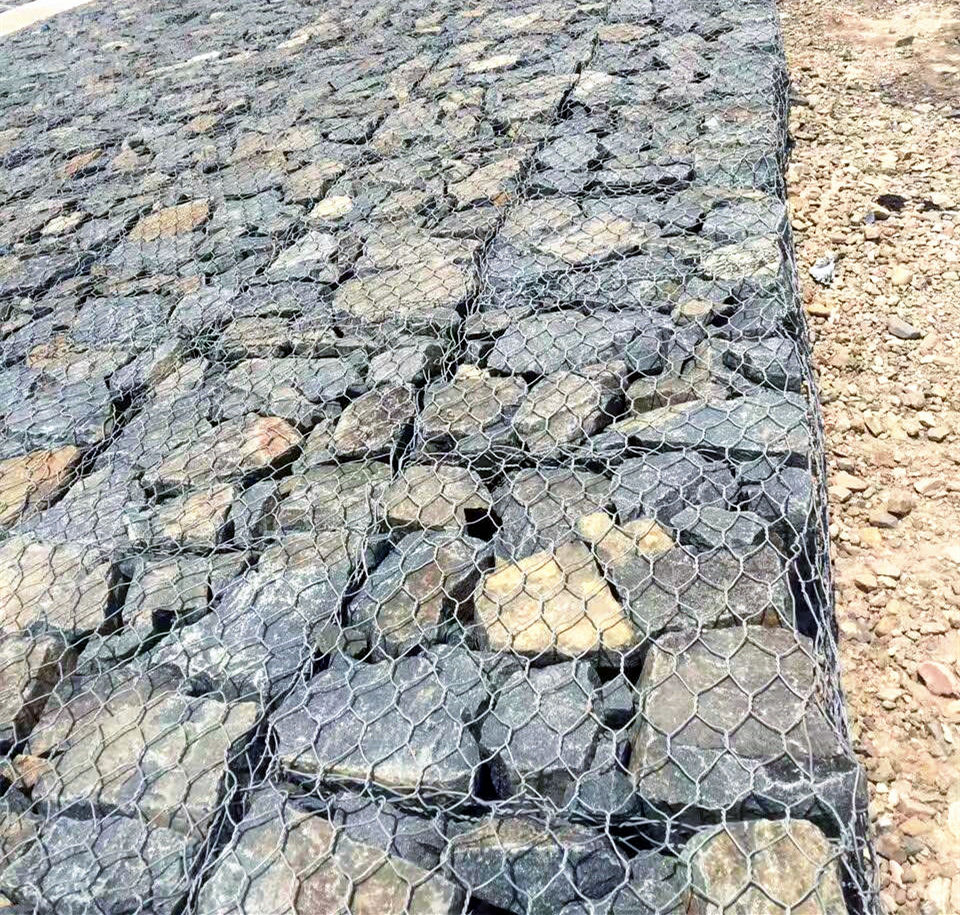
ADVANTAGES OF GABIONS:
1. Stone filling is characterized by porosity that enables water to flow and doesn’t create hydraulic pressure on the panels of gabion structures, it has drainage function.
2. Gabions are able to deform while still retaining their integrity, they adapt themselves to terrain where the concrete structures may crack and fail, they are suitable for unstable subgrades.
3. The high resistance and durability is secured by outstanding features of steel wire, its surface treatment by heavy galvanization or PVC coating and by the quality of stone filling. During the lifetime the pores are filled up with alluvia and the whole structure is grown through by vegetation what increases its strength and therefore is able to resist against great pressures.
4. Gabion baskets are made from double twisted, hexagonal woven wire mesh. The wire used to manufacture the gabion baskets is fabricated from high quality tensile, heavily galvanized steel, which is also available with an extruded PVC coating for additional corrosion protection, when required by the application. The double twist of the woven wire mesh provides integrity, strength and continuity to the structure by adding a non-raveling effect that prevents any accidental damage from spreading.
TYPES:
Zinc Coated Gabion Box
These are manufactured from mechanically woven double twisted hexagonal wire mesh using Heavily Galvanized steel wire. The edges of the mesh are reinforced with a thicker wire called the selvedge wire to strengthen them and to facilitate construction. Gabions can be divided into cells by fitting diaphragms which reinforce the structure and make installation easier.
Zinc + PVC Coated Gabion Box
In case of marine or highly corrosive environment, an additional protection is provided by extruding a 0.5mm to 0.8mm thick PVC coating over the heavily galvanized wire. PVC coating is done on the galvanized wire prior to manufacturing of the gabion mesh.
Install
1. For easy handling and shipping, gabions are supplied folded into a flat position and bundled together.
2. Gabions are readily assembled by unfolding and binding together all vertical edges with lengths of connecting wire stitched around the vertical edges.
3. The empty gabions are placed in position and wired to adjoining gabions. They are then filled with stones to one-third their depth.
4. Connecting wires, placed in each direction, brace opposing gabion walls together. The wires prevent the gabion baskets from “bulging” as they are filled. This operation is repeated until the gabion is filled.
5. After filling, the top is folded shut and wired to the ends, sides, and diaphragms.